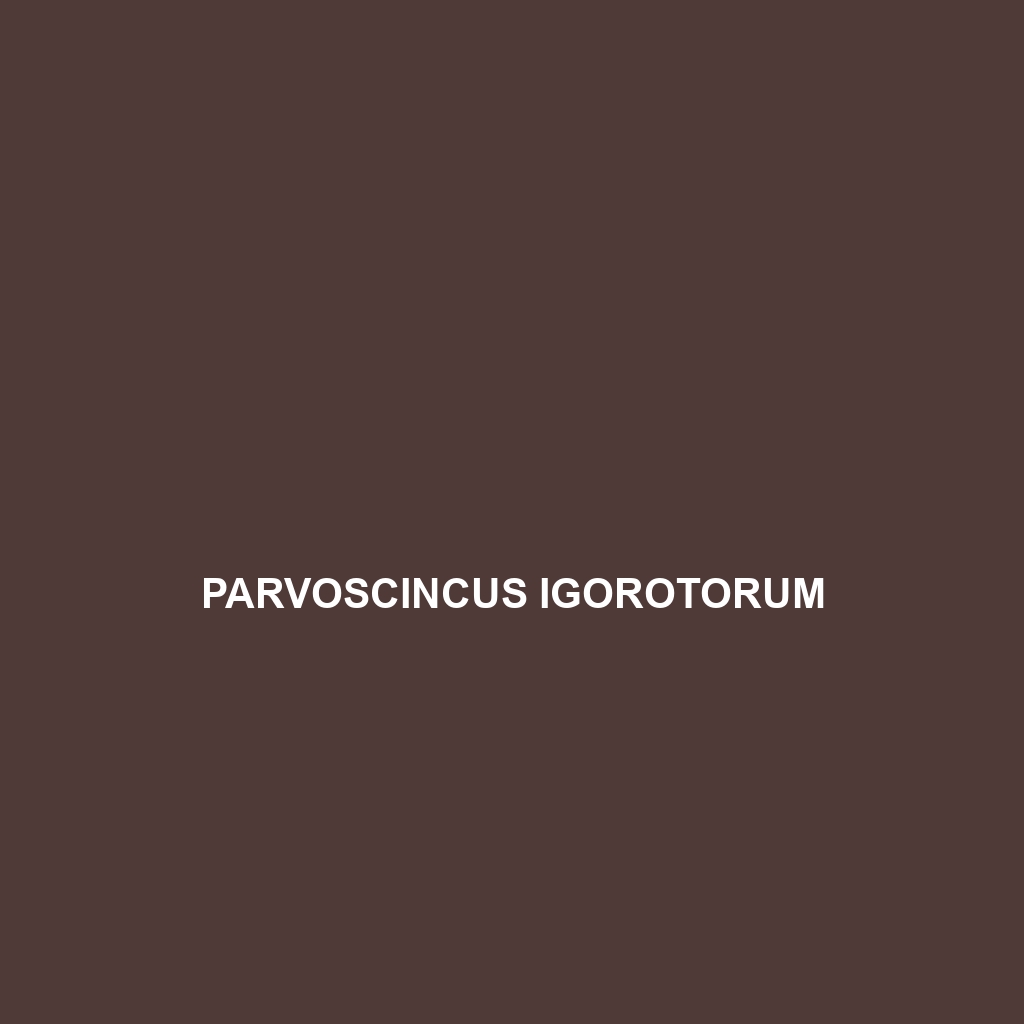Common Name
Parvoscincus hadros
Scientific Name
Parvoscincus hadros
Habitat
Parvoscincus hadros primarily thrives in lush, tropical rainforests located in Southeast Asia, particularly in areas characterized by high humidity and consistent rainfall. This species is often found in damp, shaded microhabitats, such as under the leaf litter on forest floors or within fallen logs, which provide protection from predators and harsh environmental conditions. These rainforests have a diverse range of flora and fauna, supporting a rich biodiversity that is crucial for the survival of Parvoscincus hadros. Additionally, this species may inhabit adjacent temperate forests, where mild weather and a varied ecosystem enhance its ecological niche. The overall climatic conditions — warm temperatures coupled with high humidity — significantly contribute to their active lifestyles and reproductive cycles.
Physical Characteristics
Parvoscincus hadros is a relatively small species of skink, with adults reaching a length of 10 to 15 centimeters. Its body is elongated and slender, allowing it to navigate through tight spaces in its rainforest habitat. The dorsal coloration of this skink typically exhibits a combination of olive green and brown hues, providing excellent camouflage against leaf litter and bark. One of the most distinctive features of Parvoscincus hadros is its robust head, which is proportionally larger than its body, and features pronounced, fleshy ridges above the eyes that serve as a unique identification mark. The ventral side is usually lighter, often exhibiting shades of cream or pale yellow, which further aids in its disguise against natural predators.
Behavior
In terms of behavioral patterns, Parvoscincus hadros is primarily diurnal, exhibiting a range of activities during the daylight hours. These skinks are known for their arboreal tendencies, often climbing vegetation to escape ground predators or to bask in the sunlight. During the mating season, which coincides with the peak rainy months, males engage in elaborate courtship displays involving head bobbing and tail waving to attract females. Social interactions are generally minimal; however, aggressive territorial disputes can occasionally be observed between males. The intriguing aspect of their behavior includes their ability to remain motionless for extended periods, which helps them evade detection by predators.
Diet
Parvoscincus hadros is classified as an insectivore, primarily feeding on a variety of small invertebrates. This includes ants, termites, and beetles that are abundant in their forested habitat. Their diet is supplemented with occasional plant matter such as fruits and leaves, reflecting an omnivorous diet to some extent. Their feeding patterns are opportunistic, often gleaning food from the forest floor, and they possess a keen sense of smell that aids in locating distant food sources. These dietary habits contribute to their vitality, enabling them to thrive in biodiverse ecosystems where such prey is plentiful.
Reproduction
Parvoscincus hadros reproduces through ovoviviparity, with mating occurring during the wet season when conditions are ideal for offspring survival. After a gestation period of approximately two to three months, females give birth to live young, with litter sizes typically ranging from three to six offspring. The newborn skinks are fully independent upon birth and possess the necessary adaptations to thrive in their environment. Parental care in this species is minimal; however, the mothers provide some protection during the initial days post-birth by remaining near their young in safe microhabitats.
Conservation Status
The conservation status of Parvoscincus hadros is currently categorized as vulnerable, primarily due to habitat loss from deforestation and environmental degradation associated with agricultural expansion and urban development. Conservation efforts are underway in some regions to protect the rainforests and their inhabitants, but challenges remain concerning effective habitat management and enforcement of wildlife protection laws. Efforts by local governments and conservation NGOs aim to raise awareness about the importance of preserving these ecosystems for the survival of species like Parvoscincus hadros.
Interesting Facts
One interesting fact about Parvoscincus hadros is its unique social structure; while generally solitary, these skinks have been observed engaging in cooperative foraging behaviors during periods of resource abundance. Additionally, their ability to camouflage effectively not only protects them from predators but also enhances their hunting capabilities, allowing them to ambush prey seamlessly. Furthermore, studies suggest that they may exhibit slight variations in coloration depending on their specific habitat, a phenomenon that underscores their adaptability.
Role in Ecosystem
Parvoscincus hadros plays a significant role in its ecosystem as both a predator and prey within the rainforest food web. As insectivorous skinks, they help control insect populations, contributing to ecological balance. Additionally, they serve as a food source for larger predators, including birds and small mammals, thus maintaining the dynamics of the ecological community. By participating in this complex web of interactions, Parvoscincus hadros is an essential contributor to the health and sustainability of its rainforest environment, demonstrating the importance of even the smallest species in maintaining biodiversity.
